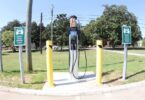By Dave Lemery | The Center Square
Sen. David Argall said he often gets asked by constituents about the need for 500 school districts in Pennsylvania.
“And I frequently have to remind people that just a few decades ago we had over 2,200 school districts in the state,” Argall said.
Argall, R-Mahanoy City, and Sen. Lisa Boscola, D-Bethlehem, led the Senate Majority Policy Committee and the Senate Democrat Policy Committee in a workshop June 17 that explored the need for the high number of school districts in a 67-county state and what could be done to consolidate them.
Only one school consolidation has occurred since the 1960s, when the Center Area and Monaca School districts consolidated into the Central Valley School District. But Pennsylvania lawmakers have been discussing school consolidation for years and called on the Joint State Government Commission to study the issue. The commission published a 290-page report in 2017.
Communities are one of the biggest challenges, as many do not want to lose their hometown schools. Boscola repeated a well-known quote from former Sen. John Wozniak, a proponent of school consolidation – “the hardest animal to kill in Pennsylvania is the school mascot.”
Argall asked if school district consolidation always led to school closings.
“In most cases, it leads to the loss of schools and consolidation,” said Dr. Helen Khanzhina, the lead policy analyst on the 2017 school consolidation study. “Sometimes schools who were promised they wouldn’t be eliminated ended up being eliminated.”
The effect on students who are put into bigger schools is mixed, Khanzhina said.
“Poorer students who are less prepared do worse in big schools and big districts in general,” she said. “On the other hand, consolidation expands their opportunities, expands their extracurricular (activities) they wouldn’t have otherwise, so there are always pros and cons.”
Taxpayers are likely to see some tax increases, according the 2017 study. Four case studies in the report showed tax increases for at least some of the townships, Khanzhina said.
Sen. Judy Schwank, D-Reading, attended several meetings in her home county several years ago when the Exeter Township and Antietam school districts considered consolidating. Costs were a factor in the failed effort, she said.
“Was there any kind of assistance that we can offer as a Commonwealth to help smooth out some of those costs that were huge?” Schwank asked the panel. “If I were an Exeter Township taxpayer, I wouldn’t necessarily want my taxes to go up just to help another school district. Yet I think that was an overwhelming sentiment and something we couldn’t get over.”
The recommendations from the 2017 study have a road map to guide the commonwealth on ways to help school districts who want to consolidate, Khanzhina said.
“There needs to be not only additional help, but there is a need for constant watching after that,” she said. “Start as early as possible and look at the chain of consolidation.”
The workshop was not an indication that school consolidation is happening immediately, Boscola said.
“We recognize that this is a very complicated, difficult issue, but we must cross this bridge at least to find a better way of how to do this,” Boscola said.









